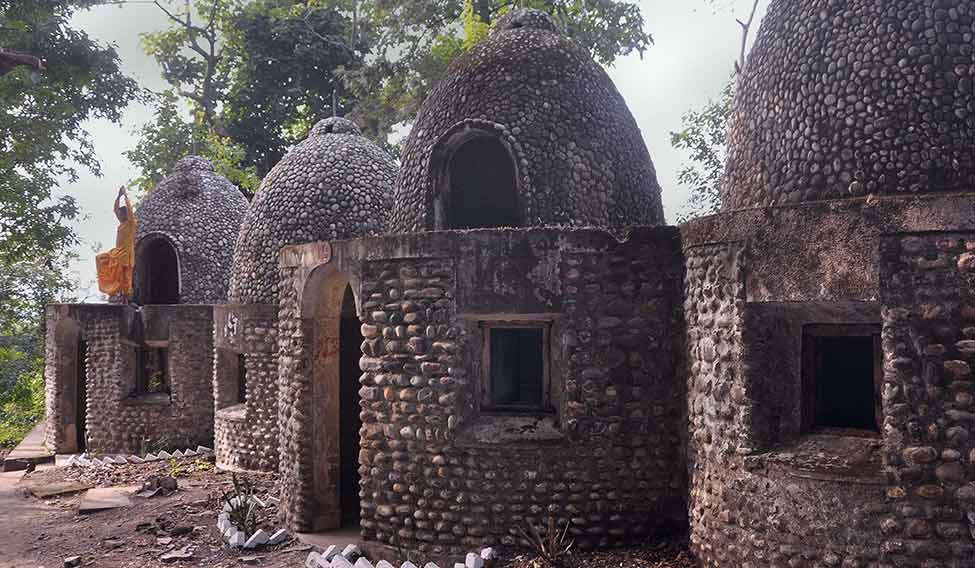Magical realism may have come from Colombia, but it will always have a second home in Rishikesh. Where else will you find a naked Aghori sadhu who eats human waste inhabiting the same space as a pay-per-hour yoga clinic frequented by movie stars.
But Rishikesh is better known for The Beatles, who arrived in this ashram town by the Ganga in 1968 to study under Maharishi Mahesh Yogi. Ringo Starr left after ten days, Paul McCartney lasted for a month; John Lennon and George Harrison would hold out for almost two months. The songs they recorded there became the White album.
Why did they leave abruptly? Both parties would remain tight-lipped, but as years passed, they reconciled. McCartney and Starr became advocates of the Maharishi’s Transcendental Meditation.
In The Beatles, the authorised biographer Hunter Davies says George Harrison had developed an interest in Indian religion after visiting India in 1966 and studying Indian music under the sitarist Ravi Shankar. “George had met Ravi’s spiritual guru Tat Baba, who explained the law of karma. It was on 24 August, 1967 that the group met Maharishi Mahesh Yogi at his organisation’s summer conference in Bangor in Wales,” Davies says.
The visit sparked tremendous cultural synergy between the east and the west. George Harrison would tour with Ravi Shankar in 1970. Indian influence in The Beatles’ music was first visible in 1965—with the track Norwegian wood. In 1966, it was further explored in Love you to (Revolver). In 1967, they released Sgt Pepper’s Lonely Hearts Club Band, which revealed their fascination for Indian motifs (tracks like Within you without you). In a way, the album, with its amalgam of eastern spirituality, drug culture and experimental motifs, was reflective of the times they lived in—an era of counterculture and upheaval.
“It was The Beatles’ visit in 1968 that opened the floodgates for a lot of people that followed. Everyone from Madonna to Duran Duran made a beeline for India. However, what needs to be kept in mind is that collaborations in classical music had already begun [like Yehudi Menuhin and Stephane Grappelli]. The Beatles’ visit gave rise to significant collaborations in the genre of pop culture,” says Anil Srinivasan, a pianist from Chennai, who was invited to perform at the 50th anniversary of Sgt Pepper in Liverpool on June 11. Srinivasan is a visiting professor at Liverpool Hope University.
“Through The Beatles, Indian instruments like the sitar entered the mainstream,” he says. “In the Sgt Pepper album, the record producer George Martin probably had the toughest job—studio-engineering it in a way that all their influences came together. Lucy in the sky with diamonds was reflective of the drug culture at the time. Good morning good morning inhabited a very different space. Within you without you was a concession for George Martin. He loved Indian music and was very much into Ravi Shankar at the time.”
Four decades after The Beatles came to Rishikesh, another rockstar went to Kainchi Dham ashram, 40km from Nainital. The visitor, Facebook founder Mark Zuckerberg, revealed during Prime Minister Narendra Modi’s US visit that he had stopped at the ashram on the advice of Apple CEO Steve Jobs when Facebook was still in genesis. Unknown to Indians, the ashram had become a nodal point of therapy and nirvana for Silicon Valley giants like Google’s Larry Brilliant and eBay founder Jeff Skoll.
A Hanuman temple at this ashram is dedicated to Neem Karoli Baba about whom there is no dearth of fantastical stories. As per one account, he was ejected from a train for travelling without ticket—the train broke down and refused to budge until he re-boarded.
Another story is related to Richard Alpert, a Harvard psychology professor who experimented with drugs and took the name Ram Dass after his dismissal from university. As the anecdote goes, Neem Karoli Baba once ingested 900mg of the psychedelic drug LSD. “It was certainly not a dose for beginners. My reaction was one of shock mixed with fascination of a social scientist eager to see what would happen,” wrote Ram Dass. “He allowed me to stay for an hour—and nothing happened. Nothing whatsoever. He just laughed at me.”
A man that can transcend LSD is a powerful master indeed.






